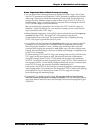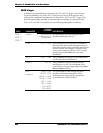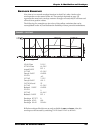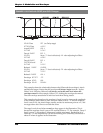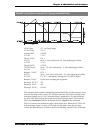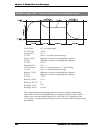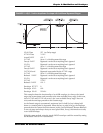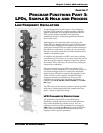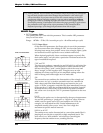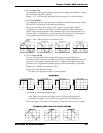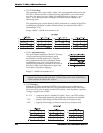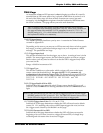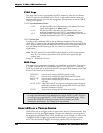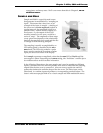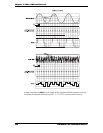
Chapter 7: LFOs, S&H and Process
ANDROMEDA A6 REFERENCE MANUAL 171
CHAPTER 7
PROGRAM FUNCTIONS PART 3:
LFOS, SAMPLE & HOLD AND PROCESS
LOW FREQUENCY OSCILLATORS
As mentioned earlier in this manual, a Low Frequency
Oscillator (LFO) primarily provides periodic (repeating
pattern) modulation to its assigned destination. But an
LFO can also produce aperiodic (non-repeating)
modulation based on a randomly-generated waveform
and a noise source.
Although they are somewhat similar in design to the
VCOs, LFOs are not intended to be used as audio sources.
Therefore, their outputs are not routed to any of the A6’s
audio paths. Instead, LFOs are routed to other elements of
the sound as a mod source, so while you can’t hear them
directly, you can hear their effect on other elements of the
sound in a modulation path.
In addition, the description of LFO waves bear a striking
resemblance to VCO waves. So you may notice that you’ve
seen many of this chapter's diagrams in previous parts of
the manual. This is not a deja vú, and we’ll try to keep the
confusion to a minimum.
The most common use of an LFO is for vibrato (VCO
frequency or pitch modulation). The mod wheel on the A6
is a perfect example of this as it controls the amplitude
(amount) of an LFO that is routed to the frequency of the
VCOs. An LFO is often routed to modulate the filter
frequency (harmonic modulation) or the any of the
amplifiers in the audio path (amplitude modulation, or
tremolo): the
PRE FILTER MIX, POST FILTER MIX or the VOICE
MIX
stages.
The LFO section of the A6 also contains a special aperiodic
mod source called sample-and-hold –
S & H on the front
panel – which we’ll get into shortly.
LFO PARAMETER DESCRIPTIONS
The parameters of the LFOs are described below.
Parameters marked with a
✿ are also mod destinations –
they can be modulated by another source. You can
experiment with any of the parameters by pressing the
VIEW button or turning the RATE knob on any of the three
LFOs. Then use the soft knobs and buttons below the
display to select a specific parameter.



